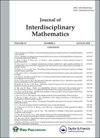足球任意球和点球的数学模型
IF 0.8
Q1 MATHEMATICS
引用次数: 0
摘要
本文建立了足球比赛中任意球和点球的数学模型。该模型假设球在空气流体中运动,并考虑了球的方向、速度、旋转和与地面的仰角以及重力加速度对阻力和马格纳斯力等气动力的影响。这个模型的结果可以从物理上解释一个球员如何踢出一个非常壮观的任意球,球在人群中高高飞过,然后突然向球门倾斜。此外,如果玩家获得组件的最佳值,则可以通过这些射门得分。本文章由计算机程序翻译,如有差异,请以英文原文为准。
Mathematical models of free kick and penalty in soccer
This paper presents a mathematical model for free kick and penalty in Soccer. The modeling is done by assuming the ball moves inside the air fluid and takes into account the influence of the direction, speed, rotation, and the elevation angle of the ball with the ground, and gravitational acceleration of aerodynamic forces such as drag force and Magnus force. The results of this modeling can explain physically how a player can do a very spectacular free kick, the ball soars high over the posse and suddenly dips towards the goal. Moreover, if the player gets the optimal value of the components, goals can be scored from these shots.
求助全文
通过发布文献求助,成功后即可免费获取论文全文。
去求助
来源期刊

JOURNAL OF INTERDISCIPLINARY MATHEMATICS
MATHEMATICS-
CiteScore
2.70
自引率
23.50%
发文量
141
期刊介绍:
The Journal of Interdisciplinary Mathematics (JIM) is a world leading journal publishing high quality, rigorously peer-reviewed original research in mathematical applications to different disciplines, and to the methodological and theoretical role of mathematics in underpinning all scientific disciplines. The scope is intentionally broad, but papers must make a novel contribution to the fields covered in order to be considered for publication. Topics include, but are not limited, to the following: • Interface of Mathematics with other Disciplines • Theoretical Role of Mathematics • Methodological Role of Mathematics • Interface of Statistics with other Disciplines • Cognitive Sciences • Applications of Mathematics • Industrial Mathematics • Dynamical Systems • Mathematical Biology • Fuzzy Mathematics The journal considers original research articles, survey articles, and book reviews for publication. Responses to articles and correspondence will also be considered at the Editor-in-Chief’s discretion. Special issue proposals in cutting-edge and timely areas of research in interdisciplinary mathematical research are encouraged – please contact the Editor-in-Chief in the first instance.
 求助内容:
求助内容: 应助结果提醒方式:
应助结果提醒方式:


